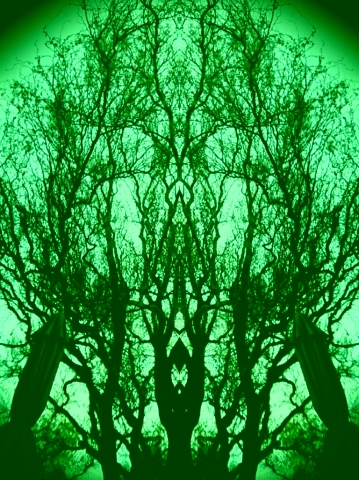Back to Bentari Project Blog
Bentari Project Blog
Posted:
Sunday, October 28, 2012
For my first 13-years, we called a little house on Ash Street our home. Then we made a big move—2 blocks south to a bigger house on Oak Street. My grandson’s name, by the way, happens to be Ash. And my youngest brother is named Oak, after our grandpa. I love that coincidence. It had nothing to do with my childhood fascination with trees, but there it is.
Yet, there was an ash tree that we loved to climb as kids. This favorite tree had grown with its trunk at an odd angle. It could be climbed by running right up to the lowest forks if you got up the proper head of steam and were agile enough to plant each foot inline. Otherwise, a nasty spill shook you up, and then the other kids’ teasing really rattled you. Then you just had to keep trying till you made it all the way up. We loved that tree so much and spent so much time in it—it was our lofty fort. We named some of the branches. There was Dead-Man’s Drop. If you could run up that trunk and were brave enough to dangle from “the drop” and then let go, you got to be in our club! And there was the Crow’s Nest way up there. It took a bit of guts to climb that high, too.
The trees in Bentari, are supporting characters. They are immediately placed in the action’s forefront, when a young boy witnesses his father’s ambush by foreigners—men who would fast become mortal threats to the boy and his tribe in Africa. The soldier’s think they have the man cornered in a tree. They shoot. The boy’s father is hit. He falls. But the stricken man’s body doesn’t reach the ground. And so the book’s first mystery takes root in high branches.
From Bentari—chapter 1, “The Calm”:
“The foreigners were gone. The forest rhythms returned. Bentari sprang like a small impala toward the tree that could solve the riddle of his father’s destiny. His hardened shoeless feet barely touched the ground as he flew over the savanna. His remarkable speed brought its own wind against his face, but he did not feel his long, black curls nor his bow and quiver bouncing on his back. All that he felt was his pounding breast as each swift pace delivered him nearer to that tree—that tree of answers.”
Image: The curly willow in our back yard—trees still fascinate and charm us

|